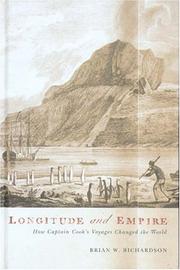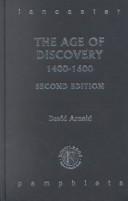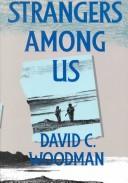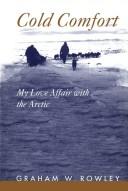| Listing 1 - 10 of 32 | << page >> |
Sort by
|
Book
Year: 2022 Publisher: Verlag der Österreichischen Akademie der Wissenschaften
Abstract | Keywords | Export | Availability | Bookmark
 Loading...
Loading...Choose an application
- Reference Manager
- EndNote
- RefWorks (Direct export to RefWorks)
Josef Wünsch (1842 - 1907) undertook a three-year research activity in the eastern provinces of the Ottoman Empire. In this volume his estate (cartographic and ethnographic works and collections) is brought together and evaluated from today's scientific point of view Josef Wünsch (1842 - 1907) unternahm eine dreijährige Forschungstätigkeit in den östlichen Provinzen des Osmanischen Reiches. In diesem Band wird sein Nachlass (kartographische und ethnographische Arbeiten und Sammlungen) zusammengeführt und aus heutiger wissenschaftlicher Sicht bewertet.
Kurdish Studies; Cartography; Scientific Explorations; Austro-Hungarian Empire; Ethnographic collections --- ÖFOS 2012, Ethnology --- Kurdische Studien; Kartographie; wissenschaftliche Explorationen; Österreichisch-ungarische Monarchie; ethnographische Sammlungstätigkeit --- ÖFOS 2012, Ethnologie
Periodical
ISSN: 18791948 02731177 Year: 1981 Publisher: Oxford ; New York : Pergamon,
Abstract | Keywords | Export | Availability | Bookmark
 Loading...
Loading...Choose an application
- Reference Manager
- EndNote
- RefWorks (Direct export to RefWorks)
Space sciences --- Astronautics --- Geophysics --- Aerospace Medicine --- Space Flight --- Aerospace Medicine. --- Space Flight. --- Sciences spatiales --- Astronautique --- Géophysique --- Périodiques. --- Spaceflight --- Space Exploration --- Exploration, Space --- Explorations, Space --- Flight, Space --- Flights, Space --- Space Explorations --- Space Flights --- Spaceflights --- Medicine, Aerospace --- Medicine, Aviation --- Medicine, Space --- Aviation Medicine --- Space Medicine
Book

ISBN: 2856535097 2856538436 Year: 2019 Publisher: Paris : Publications scientifiques du Muséum,
Abstract | Keywords | Export | Availability | Bookmark
 Loading...
Loading...Choose an application
- Reference Manager
- EndNote
- RefWorks (Direct export to RefWorks)
Il y a plus de trois quarts de siècle, en 1921, Théodore Monod entrait au Muséum national d’Histoire naturelle, une institution qui allait devenir pour lui la "maison mère" et où il continue à l’âge de 95 ans de se rendre encore chaque jour. Nul mieux que Théodore Monod n’a su illustrer au XXe siècle l’une des vocations scientifiques initiée par les plus célèbres savants du Jardin du Roy, celle de naturaliste voyageur. Dans toutes les disciplines scientifiques auxquelles il a apporté sa contribution, Théodore Monod l’a fait avec autant de rigueur et d’exigence qu’en est capable un homme dont la vie entière a été vouée à la science. L’Afrique, avec en particulier le désert du Sahara, est très vile devenue son terrain de prédilection. La création de l’IFAN (Institut Français d’Afrique Noire, devenu en 1965 Institut Fondamental d’Afrique Noire) qu’il dirigea pendant plus de 25 ans lui a permis de développer, à l’image du Muséum national d’Histoire naturelle, une institution dédiée au continent africain. À travers son œuvre de naturaliste, Théodore Monod a su conserver l’intérêt scientifique, mais aussi le respect et l’amour que lui ont dès son plus jeune âge inspiré toutes les formes de vie, jusqu’à ses plus modestes représentants. Cet ouvrage rassemble une série d’articles au cours desquels ses collègues et amis rendent compte de sa contribution scientifique dans des domaines aussi variés que la géologie, la botanique, la zoologie, la paléontologie, la préhistoire ou l’histoire. Il complète ainsi le portrait de l’humaniste bien connu du grand public par un hommage à l’homme de science.
jubilee volume --- history of science --- biographies --- naturalists --- France --- Africa --- Sahara --- explorations --- expeditions --- Natural history. --- Monod, Théodore, --- History, Natural --- Natural science --- Physiophilosophy --- Biology --- Science --- Monod, Th. --- foi --- naturalisme --- ichtyologie

ISBN: 0774851562 9780774851565 0774811897 9780774811897 Year: 2005 Publisher: Vancouver, B.C. UBC Press
Abstract | Keywords | Export | Availability | Bookmark
 Loading...
Loading...Choose an application
- Reference Manager
- EndNote
- RefWorks (Direct export to RefWorks)
Before Captain Cook's three voyages, to Europeans the globe was uncertain and dangerous; after, it was comprehensible and ordered. Written as a conceptual field guide to the voyages, Longitude and Empire offers a significant rereading of both the expeditions and modern political philosophy. More than any other work, printed accounts of the voyages marked the shift from early modern to modern ways of looking at the world. The globe was no longer divided between Europeans and savages but populated instead by an almost overwhelming variety of national identities. Cook's voyages took the fragmented and obscure global descriptions available at the time and consolidated them into a single, comprehensive textual vision. Locations became fixed on the map and the people, animals, plants, and artifacts associated with them were identified, collected, understood, and assimilated into a world order. This fascinating account offers a new understanding of Captain Cook's voyages and how they affected the European world view.
Discoveries in geography. --- Voyages around the world --- Discoveries, Maritime --- Discovery and exploration --- Exploration and discovery --- Explorations in geography --- Exploring expeditions --- Geographical discoveries --- Geographical discovery --- Maritime discoveries --- Voyages and travels --- Explorers --- Geographical discoveries in literature --- History --- Cook, James, --- Cook, Jacques --- Influence.
Book
ISBN: 0192534602 9780192534606 0192192329 9780192192325 0192891235 9780192891235 Year: 1998 Publisher: Oxford, England ; New York, New York : Oxford University Press,
Abstract | Keywords | Export | Availability | Bookmark
 Loading...
Loading...Choose an application
- Reference Manager
- EndNote
- RefWorks (Direct export to RefWorks)
Discoveries in geography. --- Geography, Medieval. --- Geography --- Medieval geography --- Discoveries, Maritime --- Discovery and exploration --- Exploration and discovery --- Explorations in geography --- Exploring expeditions --- Geographical discoveries --- Geographical discovery --- Maritime discoveries --- Voyages and travels --- Explorers --- Geographical discoveries in literature --- Europe --- Civilization.
Book
ISBN: 1803276002 1803275995 9781803276007 9781803275994 Year: 2023 Publisher: Oxford : Archaeopress Publishing Ltd,
Abstract | Keywords | Export | Availability | Bookmark
 Loading...
Loading...Choose an application
- Reference Manager
- EndNote
- RefWorks (Direct export to RefWorks)
En Tierras de Hércules explores the history and archaeological heritage of the southwest coast of the Isla Gaditana - the territory where the Temple of Hercules and the Idol of Cádiz are said to have stood for more than twelve centuries: Torregorda, Camposoto and Sancti Petri.The text examines the occupation sequence of Palaeolithic, Neolithic, Bronze-Age and historic societies in the area. In addition, it analyses the shaping of the landscape by geological, sedimentary and human action since the Phoenician settlement. The historical region of the Strait of Gibraltar, considered the end of the 'known world' until the modern age, is studied as an intercontinental and cultural bridge.The core of the work is an examination of 32 groups of remains, classified according to communicational, strategic and environmental factors. This includes those relating to the underwater site of the Sancti Petri Castle, which are usually associated with the Temple of Hercules. Using manuscripts from local archives, the book documents elements such as the emergence of the underwater remains of the Temple of Hercules or the construction of canals and defensive architecture. And by means of prehistoric rock art, it examines the origins of sailing in the vicinity of Gibraltar. A final chapter recommends the investigation of the millenary intersection between the Rio Arillo channel and the Calzada de La Alcantarilla road.
Social sciences --- Temple of Hercules --- Atlantic band of Cádiz --- Defensive architecture --- Archaeological heritage --- Strait of Gibraltar --- Prehistoric settlement --- Social Science / Archaeology --- Social sciences. --- Archaeology. --- Exploration (Archaeology) --- Cádiz (Spain) --- Antiquities. --- Explorations. --- Excavations (Archaeology)

ISBN: 0415279968 041527995X 1299950612 1315015471 1136479686 9781136479687 9781299950610 9781315015477 9780415279956 9780415279963 9781136479755 9781136479823 1136479759 Year: 2002 Volume: *25,*27 Publisher: London Routledge
Abstract | Keywords | Export | Availability | Bookmark
 Loading...
Loading...Choose an application
- Reference Manager
- EndNote
- RefWorks (Direct export to RefWorks)
The Age of Discovery explores one of the most dramatic features of the late medieval and early modern period: when voyagers from Western Europe led by Spain and Portugal set out across the world and established links with the New World.
History of Europe --- History of civilization --- anno 1400-1499 --- anno 1500-1599 --- Aardrijkskundige ontdekkingen --- Discoveries [Maritime ] --- Discoveries and exploration --- Discoveries in geography --- Découvertes géographiques --- Découvertes maritimes --- Exploration and discoveries --- Explorations --- Explorations in geography --- Exploring expeditions --- Geografische ontdekkingen --- Geographical discoveries --- Geographical discovery --- Grandes découvertes --- Géographie -- Découvertes --- Maritime discoveries --- Monde -- Découverte et exploration --- Ontdekkingen [Aardrijkskundige ] --- Voyages de découverte --- History, Modern --- Middle Ages. --- History. --- Discoveries in geography. --- Discoveries, Maritime --- Discovery and exploration --- Exploration and discovery --- Voyages and travels --- Explorers --- Geographical discoveries in literature
Periodical
ISSN: 1349967X 09149201 Year: 1987 Publisher: Sagamihara, Japan : Japanese Society for Biological Sciences in Space,
Abstract | Keywords | Export | Availability | Bookmark
 Loading...
Loading...Choose an application
- Reference Manager
- EndNote
- RefWorks (Direct export to RefWorks)
Space biology --- Space medicine --- Exobiology --- Space Flight. --- Extraterrestrial Environment. --- Cosmic Radiation. --- Exobiology. --- Space biology. --- Space medicine. --- Life Sciences --- Biology --- Aerospace medicine --- Bioastronautics --- Cosmobiology --- Astrobiology --- Extraterrestrial Life --- Life, Extraterrestrial --- Radiation, Cosmic --- HZE Particles --- Cosmic Radiations --- HZE Particle --- Particle, HZE --- Particles, HZE --- Radiations, Cosmic --- Environment, Extraterrestrial --- Space (Astronomy) --- Environments, Extraterrestrial --- Extraterrestrial Environments --- Spaces (Astronomy) --- Spaceflight --- Space Exploration --- Exploration, Space --- Explorations, Space --- Flight, Space --- Flights, Space --- Space Explorations --- Space Flights --- Spaceflights --- Medicine --- Space sciences --- Transportation medicine --- Aviation medicine --- Habitable planets --- Life --- Extraterrestrial Environment --- Solar Activity --- Space Flight --- Planets --- Space Travel --- Space Travels --- Travel, Space --- Travels, Space --- Aerospace Medicine --- Origin --- Space Biology --- Biologies, Space --- Biology, Space --- Space Biologies --- Space Research

ISBN: 1282853600 9786612853609 0773565639 9780773565630 0773513485 9780773513488 9781282853607 6612853603 Year: 1995 Publisher: Montreal, Que. Buffalo McGill-Queen's University Press
Abstract | Keywords | Export | Availability | Bookmark
 Loading...
Loading...Choose an application
- Reference Manager
- EndNote
- RefWorks (Direct export to RefWorks)
In 1868 American explorer Charles Francis Hall interviewed several Inuit hunters who spoke of strangers travelling through their land. Hall immediately jumped to the conclusion that the hunters were talking about survivors of the Franklin expedition and set off for the Melville Peninsula, the location of many of the sightings, to collect further stories and evidence to support his supposition. His theory, however, was roundly dismissed by historians of his day, who concluded that the Inuit had been referring to other white explorers, despite significant discrepancies between the Inuit evidence and the records of other expeditions. In Strangers Among Us Woodman re-examines the Inuit tales in light of modern scholarship and concludes that Hall's initial conclusions are supported by Inuit remembrances, remembrances that do not correlate with other expeditions but are consistent with Franklin's.
Discoveries in geography. --- Discoveries, Maritime --- Discovery and exploration --- Exploration and discovery --- Explorations in geography --- Exploring expeditions --- Geographical discoveries --- Geographical discovery --- Maritime discoveries --- Voyages and travels --- Explorers --- Geographical discoveries in literature --- Franklin, John, --- Franklin, Dzhon, --- Arctic regions --- Melville Peninsula (N.W.T.) --- British. --- History.

ISBN: 077357882X 0773530053 1282853848 1282865927 9786612853845 9786612865923 0773565914 0773575421 9780773565913 0773513930 9780773513938 0773518231 9780773518230 9780773575424 9780773578821 9780773530058 Year: 2007 Publisher: Montreal [Que.] McGill-Queen's University Press
Abstract | Keywords | Export | Availability | Bookmark
 Loading...
Loading...Choose an application
- Reference Manager
- EndNote
- RefWorks (Direct export to RefWorks)
An engaging reminiscence of the end of an era in arctic exploration.
Rowley, Graham --- Travel --- Baffin Island (Nunavut) --- Baffin Island (N.W.T.) --- Baffin Land (Nunavut) --- Arctic Archipelago (Nunavut and N.W.T.) --- Description and travel. --- Discoveries in geography. --- Discovery and exploration. --- Discoveries, Maritime --- Discovery and exploration --- Exploration and discovery --- Explorations in geography --- Exploring expeditions --- Geographical discoveries --- Geographical discovery --- Maritime discoveries --- Voyages and travels --- Explorers --- Geographical discoveries in literature --- History --- British.
| Listing 1 - 10 of 32 | << page >> |
Sort by
|

 Search
Search Feedback
Feedback About UniCat
About UniCat  Help
Help News
News